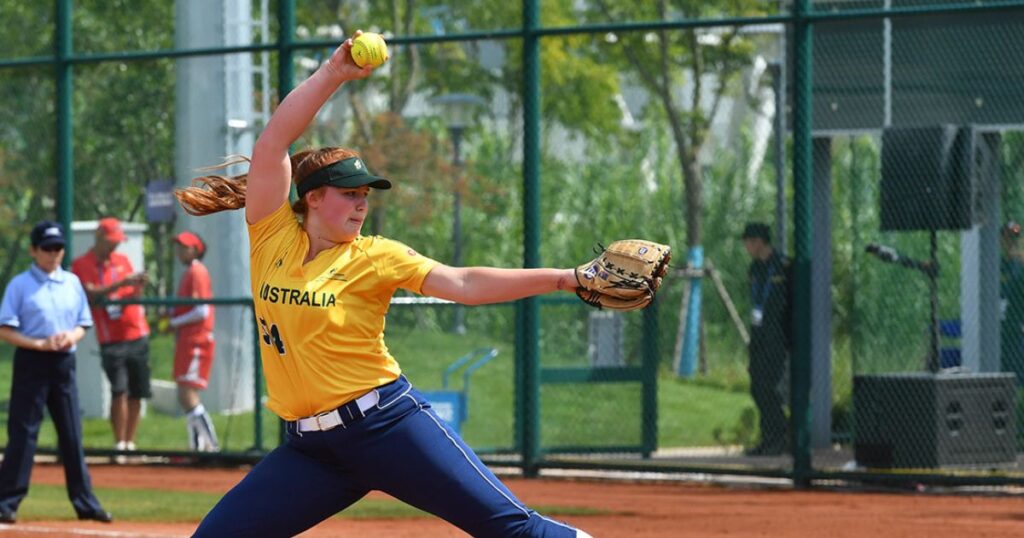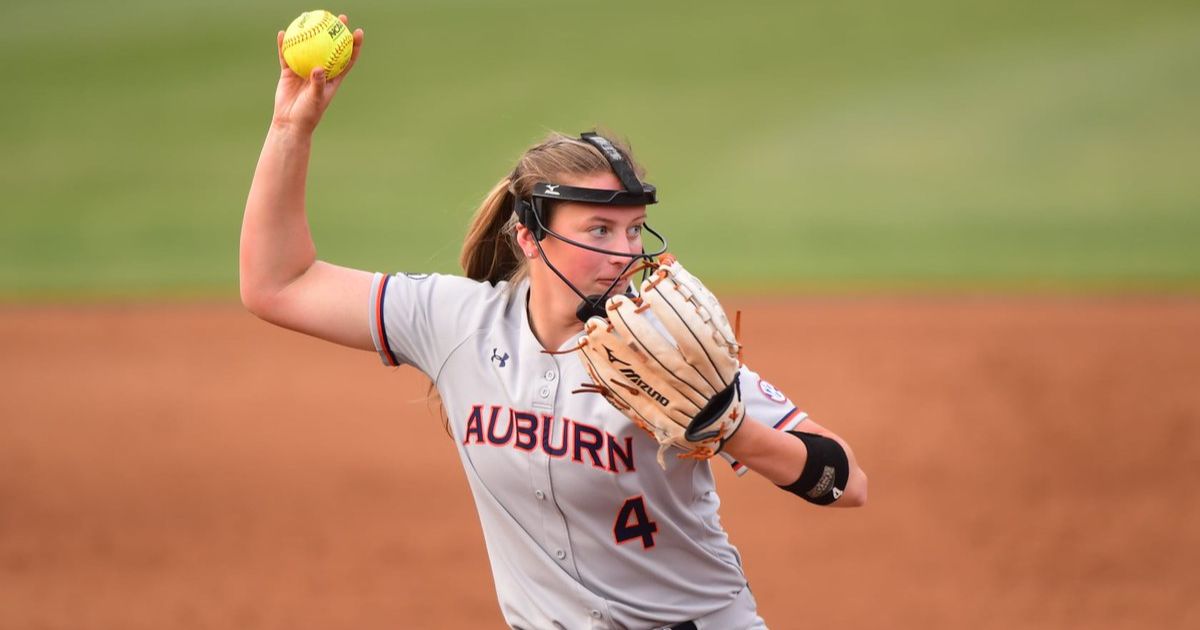In softball, OBP, which stands for On-Base Percentage, is a key statistic that measures a player’s ability to reach base safely through hits, walks, and hit-by-pitches. It is a crucial metric in evaluating a player’s offensive performance, offering insights into their consistency and effectiveness in getting on base during a game.
What is OBP in softball? This fundamental question opens the gateway to understanding a player’s impact on the game beyond the conventional batting statistics. OBP goes beyond the focus on hits alone, encompassing various ways a player can contribute to advancing around the bases. Let’s dive in and discover the significance it holds in shaping a player’s offensive profile.
In softball, a high OBP reflects a player’s ability to consistently reach base, showcasing their offensive reliability. Players with a keen understanding of the strike zone, patience at the plate, and the ability to draw walks contribute significantly to a team’s success. This article delves into the intricacies of OBP in softball, unraveling its importance and shedding light on how players can leverage this statistic to elevate their game.
Understanding OBP in Softball
On-Base Percentage (OBP) in softball is a crucial statistic that measures a player’s ability to get on base safely, combining hits, walks, and hit-by-pitches. It goes beyond traditional batting averages by considering various ways a player can reach base.
OBP provides a more comprehensive view of a player’s offensive contribution, highlighting their knack for getting on base, which is essential for advancing runners and scoring runs. Coaches and analysts often use OBP to evaluate a player’s overall offensive effectiveness and to make strategic decisions in gameplay.
Key Components of On-Base Percentage (OBP)
The calculation of OBP involves summing up a player’s hits, walks, and hit-by-pitches and dividing that total by the sum of their at-bats, walks, hit-by-pitches, and sacrifice flies. This formula accounts for both successful hits and instances where a player reaches base through patience and discipline, such as drawing walks.
Understanding the components of OBP is vital for players and coaches aiming to improve offensive strategies. By focusing on not just hits but also walks and hit-by-pitches, players can develop a more well-rounded offensive approach, contributing positively to their team’s overall performance.
Calculation of OBP in Softball
The formula for calculating OBP in softball is straightforward but provides valuable insights into a player’s offensive capabilities. OBP is determined by adding the player’s hits, walks, and hit-by-pitches and then dividing this sum by the total number of plate appearances, excluding sacrifices.
This calculation emphasizes the importance of not only hitting but also drawing walks and being hit by pitches, recognizing the different ways a player can contribute to their team’s offensive success. Coaches use OBP as a quantitative measure to assess a player’s ability to consistently reach base and make meaningful contributions to the team’s overall offensive performance.
Significance of OBP in Softball Strategy
In softball, OBP plays a significant role in shaping team strategy during games. A player with a high OBP is an asset as they consistently reach base, putting pressure on the opposing pitcher and defense. Teams often strategize around players with strong OBP by placing them in key positions in the lineup to maximize their plate appearances.
Coaches may also instruct players with a knack for drawing walks to be patient at the plate, forcing pitchers to throw more pitches and potentially leading to better hitting opportunities. Understanding the significance of OBP allows teams to tailor their offensive approach, making informed decisions that increase the likelihood of scoring runs.
Comparing OBP to Other Softball Metrics
While batting average is a commonly used metric in softball, OBP provides a more comprehensive assessment of a player’s offensive contributions. Unlike batting average, which only considers hits, OBP includes walks and hit-by-pitches, offering a broader perspective on a player’s ability to get on base. Comparing OBP to other metrics, such as slugging percentage , helps paint a more complete picture of a player’s offensive prowess.
While slugging percentage emphasizes the power-hitting aspect, OBP reflects a player’s overall offensive effectiveness by considering both power and on-base skills. Coaches and analysts use these comparisons to make more informed decisions about player performance and lineup construction.
Improving OBP Tips for Softball Players

For softball players looking to enhance their OBP, a combination of hitting skills, plate discipline, and situational awareness is essential. Improving pitch recognition to draw more walks, developing a consistent and effective batting stance, and understanding when to swing or take a pitch are crucial aspects. Players can also work on their base-running skills to capitalize on opportunities to advance when on base.
Coaches often emphasize the importance of a well-rounded offensive game, encouraging players to focus not only on hitting for power but also on getting on base through various means. By implementing these tips, players can contribute more effectively to their team’s success and become more well-rounded offensive threats.
Role of OBP in Team Performance
OBP is a key factor influencing a team’s overall offensive performance and success in softball. Teams with a collective high OBP are more likely to create scoring opportunities, leading to increased run production. Coaches analyze team OBP to assess offensive strengths and weaknesses, making strategic decisions about lineup construction and in-game tactics.
The collective ability of a team to get on base impacts the dynamics of a game, affecting the pitcher’s approach, defensive strategies, and overall team morale. Recognizing the role of OBP in team performance allows coaches to develop effective offensive strategies that capitalize on the strengths of their players.
Common Misconceptions about OBP in Softball
Despite its importance, there are common misconceptions about OBP in softball. Some may mistakenly believe that OBP solely depends on a player’s hitting ability, overlooking the significance of walks and hit-by-pitches. Others might assume that a high batting average guarantees a high OBP, neglecting the impact of other factors.
Clearing up these misconceptions is crucial for players, coaches, and fans to accurately appreciate the value of OBP in evaluating offensive performance. By understanding the multifaceted nature of OBP, individuals can make more informed assessments of a player’s overall offensive contributions.
How Coaches Use OBP to Evaluate Players?
Softball coaches utilize OBP as a key metric for evaluating players’ offensive capabilities. OBP provides coaches with valuable insights into a player’s ability to contribute to the team’s success by consistently reaching base. Coaches assess individual OBP scores to make informed decisions about lineup placement, offensive strategies, and player development priorities.
Players with high OBP are often positioned in key spots in the batting order to maximize their impact on the game. Coaches may use OBP trends over time to identify areas for improvement and tailor their coaching strategies to enhance overall team performance.
OBP and Its Place in Softball Analytics
As softball analytics continue to evolve, OBP maintains a central role in advanced statistics. Analysts use OBP, along with other metrics, to gain a deeper understanding of player performance and team dynamics. Advanced statistics models often incorporate OBP to assess offensive efficiency, player contributions, and overall team success.
By delving into the nuances of OBP and combining it with other advanced metrics, analysts can provide more comprehensive insights into the intricate aspects of softball performance. This analytical approach not only aids in player evaluations but also enhances strategic decision-making for coaches and teams aiming for a competitive edge.
FAQs
How is OBP calculated in softball?
OBP is determined by adding a player’s hits, walks, and hit-by-pitches, and then dividing that sum by the total number of plate appearances.
Why is OBP important in softball?
OBP is a key metric as it reflects a player’s ability to get on base, contributing to the team’s offensive performance and scoring opportunities.
How does OBP differ from batting average in softball?
While batting average focuses solely on hits, OBP considers various ways a player can reach base, providing a more comprehensive measure of offensive contribution in softball.
Conclusion
Understanding the concept of OBP (On-Base Percentage) in softball is crucial for players, coaches, and enthusiasts alike. OBP serves as a valuable metric, offering insight into a player’s ability to reach base successfully through hits, walks, and other means. It not only reflects an individual player’s performance but also contributes to evaluating the overall offensive prowess of a team. A high OBP is indicative of a player’s discipline, selective batting approach, and capacity to contribute to run-scoring opportunities.
Coaches can utilize OBP to make strategic decisions, while players can focus on improving their skills to enhance this key statistic. In essence, OBP plays a central role in assessing offensive efficiency and is an integral aspect of softball analytics, fostering a more comprehensive understanding of a player’s contribution to the team’s success.








